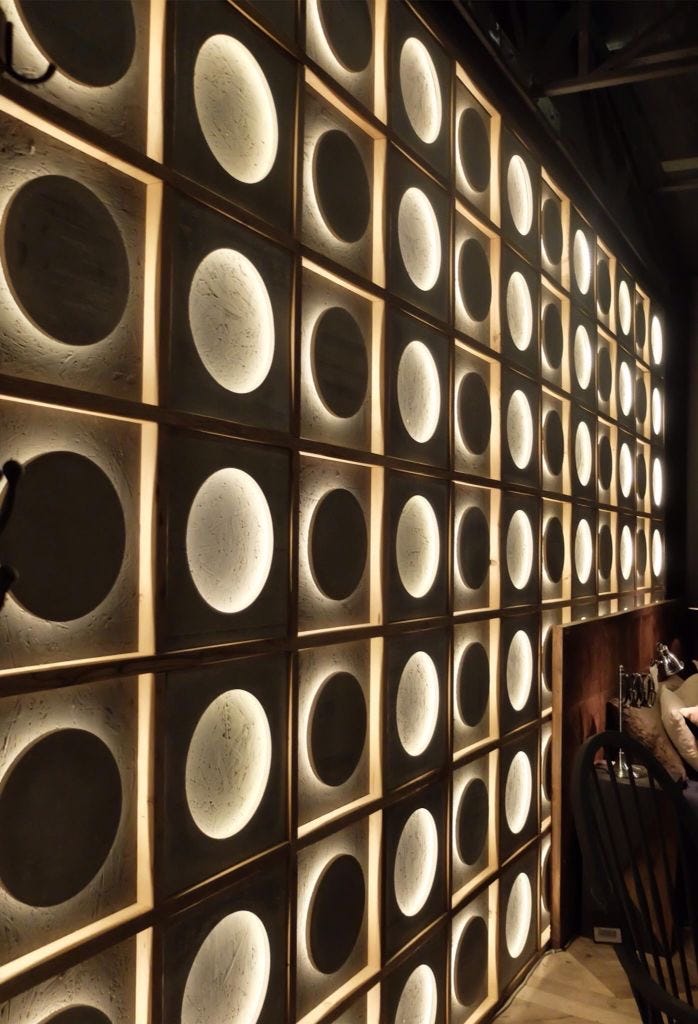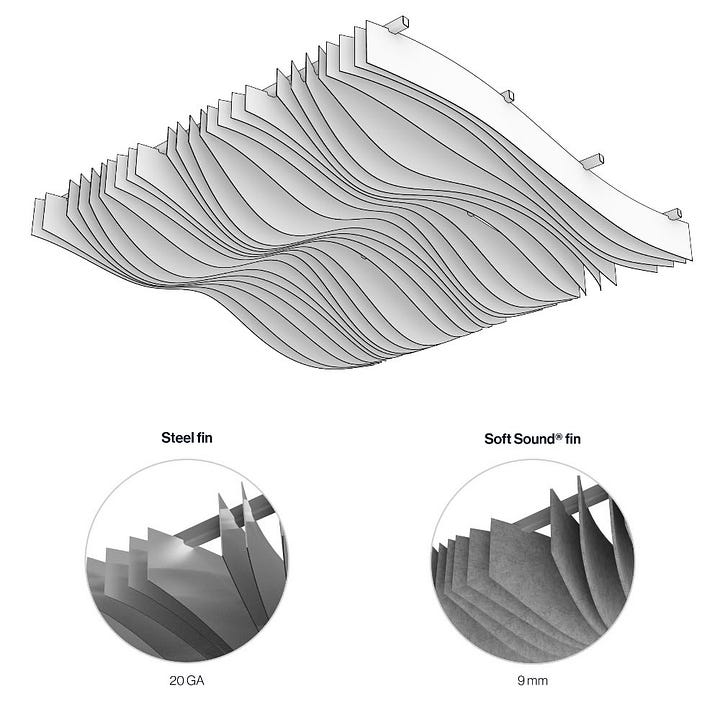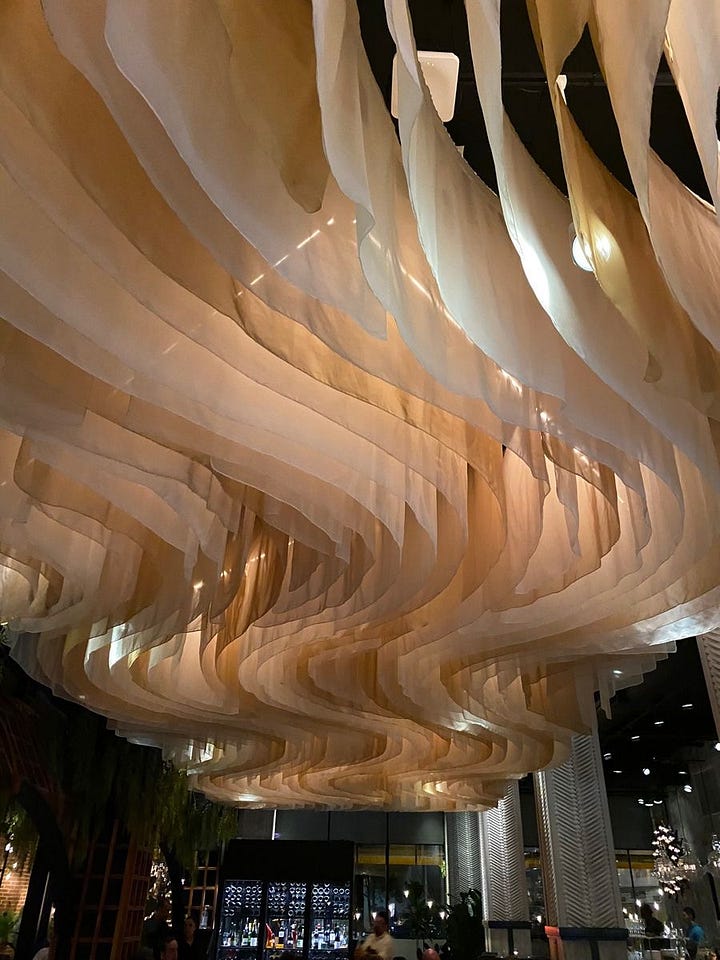Multi-sensory design isn’t just about what we see it’s about how we experience space through sound, touch, scent, and even taste. The environments we move through every day subtly shape our emotions, trigger memories, and leave lasting impressions. When these sensory elements are intentionally woven into design, they transform spaces from mere backdrops into immersive narratives that engage and inspire.
Each of our senses connects with the brain in a unique way. Sound can shift our mood in an instant, while scent has the power to transport us to another time and place. A truly well-designed space uses these elements in harmony to create an atmosphere that both comforts and stimulates. This way, multi-sensory design becomes a form of silent storytelling, where spaces communicate with us without the need for words.
You might first think of obvious applications like lobby and elevator music, While these are part of multi-sensory design, they barely scratch the surface. Every sensory detail, whether the scent lingering in the air, the texture of a wall, or the way light shifts throughout the day works together to create a unique, deeply felt experience.
Designers hold the power to influence how people interact with and feel within a space. This makes it crucial to design with intention. Imagine walking into a dimly lit, contemplative space that gradually transitions into an area where natural sunlight interacts with strategically placed reflective surfaces. The interplay of sunlight and reflective surfaces doesn’t just enhance aesthetics it creates a dynamic experience that shifts with time. A morning space, for example, can be designed so that early light diffuses softly through translucent panels, then intensifies to reveal intricate reflections on the walls and ceiling. By using both natural and artificial lighting in a thoughtful way, designers can create a narrative of awakening, setting the pace for a guest’s experience.
Lighting doesn’t just shape ambiance it also connects us to the world outside. A well-integrated lighting system that brightens during the day and dims as the sun sets mirrors the natural circadian rhythm, providing a subconscious sense of time. Placing these lighting strategies throughout a hotel can create a deep connection with nature and evoke a sense of tranquility. Some materials now respond to these shifts, subtly changing their color or texture as daylight progresses. These dynamic surfaces act like a visual soundtrack, guiding guests through different phases of their day. Glass bricks, for instance, can soften incoming light while also serving as acoustic barriers, enhancing both the visual and auditory environment of a space.




Flooring is another crucial but often-overlooked element in multi-sensory design. Beyond aesthetics, the material beneath our feet affects both sound and movement. A transition from hard flooring to plush carpet isn’t just about comfort, it signals a shift in atmosphere. A carpeted space naturally feels quieter and more intimate, as soft materials absorb sound and encourage a slower, more relaxed pace. This is why hotel hallways often feature carpets; they create a seamless transition from day and night areas from common areas to the tranquil privacy of guest rooms. Small design choices like these make a significant impact without the user even realising it.
Walls, too, can become an active part of the sensory experience. Imagine walls lined with fine filaments engineered to respond to airflow. These strings aren’t merely decorative; they vibrate with the wind, creating a soft, ethereal soundscape as well as inviting interaction. Running a hand along them produces a quiet, musical hum, blending touch and sound in an unexpected way. Similarly, light projections can transform walls into dynamic surfaces, using shifting patterns to create a living artwork that enhances the spatial experience.


Beyond static elements, kinetic sculptures and adaptive facades are pushing the boundaries of multisensory design. Imagine walking beneath a canopy of suspended panels that shift in response to movement, casting ever-changing shadows while producing gentle, ambient sounds. These installations blur the line between architecture and art, making spaces feel alive and responsive.
Tactile materials like velvet add another layer to multisensory design, serving both functional and aesthetic purposes. A velvet panel above a skylight, for example, can soften incoming light while also absorbing sound, making it an ideal material for spaces that require both acoustic control and visual warmth. Thoughtfully integrating such materials elevates a space from merely functional to deeply atmospheric.


The most innovative approach is to synchronise these sensory elements into a cohesive narrative. Imagine a hotel lobby where the journey from entrance to check-in is choreographed: guests transition from a serene, dimly lit corridor into a sunlit atrium where reflective surfaces catch the light. As they walk, the floor emits a soft, welcoming resonance, and walls hum gently in response to the surrounding airflow. Here, every sensory element is carefully curated, forming an experience that evokes comfort, excitement, and anticipation.
Technology is making this level of integration more intuitive than ever. Sensors, microprocessors, and responsive materials allow spaces to adapt in real time to their occupants and environmental conditions. Imagine a lighting system that shifts not just based on time of day, but in response to the number of people in a room, adjusting intensity to maintain an optimal balance of warmth and brightness. Soundscapes can evolve dynamically, softening as foot traffic decreases or subtly enhancing certain frequencies to match the activity in a space.
At its core, multisensory design is about creating spaces that resonate on a deeper level, spaces that don’t just look beautiful but feel alive. By weaving together aesthetics, technology, and psychology, designers can craft environments that shape experiences in ways that are both intuitive and unforgettable. The best spaces are not just seen; they are experienced in their entirety, leaving a lasting imprint on those who pass through them.
How are you integrating multi-sensory elements into your own spaces? What are some sensory details you’ve noticed in environments that made an impact on you?
I’d love to hear how you approach multi-sensory design! drop a comment or share your thoughts with me!



